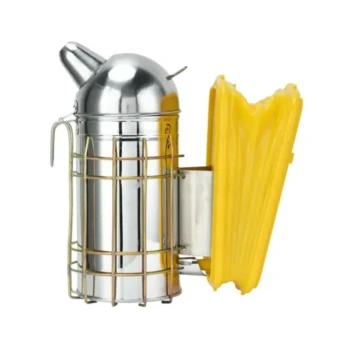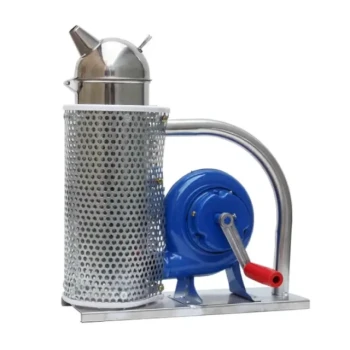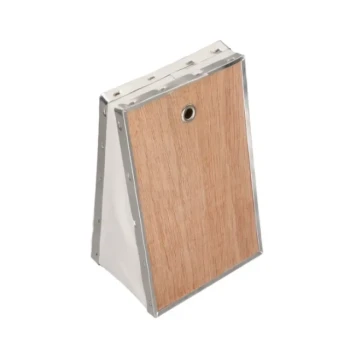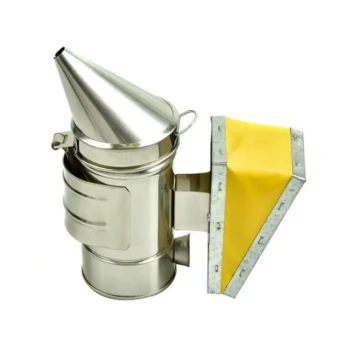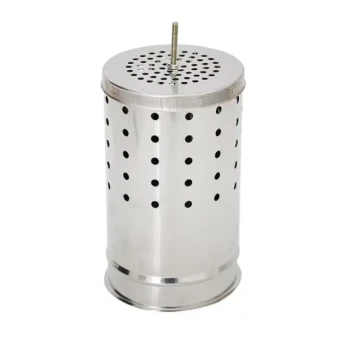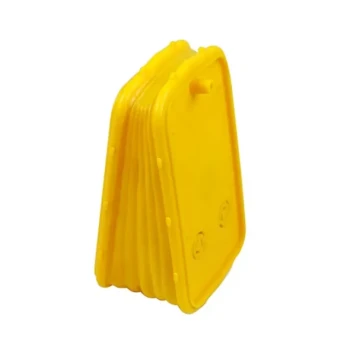In short, the safest ways to extinguish a bee smoker are to either completely douse the hot fuel with water or to deprive the embers of oxygen in a fireproof environment. The water method guarantees the fire is out, while the oxygen-deprivation method allows you to preserve unburnt fuel for future use, but requires more caution.
Your choice of method comes down to a simple trade-off: guaranteed safety versus fuel efficiency. While both approaches are effective, understanding the principles behind them is critical to preventing an accidental fire, which can happen hours after you believe the smoker is out.
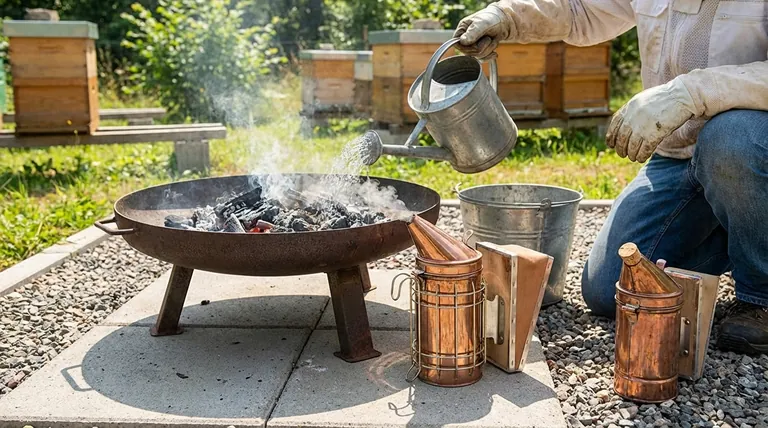
The "Guaranteed Safe" Method: Dousing with Water
This approach is the most foolproof way to ensure every ember is extinguished. It works by rapidly removing heat, one of the three components a fire needs to survive (along with fuel and oxygen).
Why Water is the Gold Standard
Water instantly cools the burning material below its ignition temperature. By completely submerging or soaking the fuel, you eliminate any possibility of a lingering hot spot that could re-ignite later.
Method 1: Empty into a Fireproof Area
The most common practice is to empty the smoker's contents into a designated safe zone. This could be a metal bucket, a backyard fire pit, or a metal trash can. Once emptied, thoroughly douse the ashes and fuel with water until they are cool to the touch.
Method 2: Empty Directly into Water
An even more direct approach is to dump the smoker's contents straight into a bucket partially filled with water. This ensures immediate and complete submersion of all hot material.
Key Precaution: Mind the Grate
Be aware that when you tip the smoker over to empty it, the small metal grate at the bottom can easily fall out with the ashes. Always check to ensure you haven't accidentally discarded it.
The "Fuel Saver" Method: Oxygen Deprivation
If you want to reuse the unburnt fuel in your smoker, you can extinguish the embers by cutting off their oxygen supply. This method is effective but requires diligence, as embers can remain dangerously hot for hours.
How Suffocation Works
By sealing off airflow, the fire consumes all the available oxygen inside the smoker and extinguishes itself. This leaves the remaining, unburnt fuel intact for your next hive inspection.
Option 1: Plugging the Spout
Firmly plug the smoker's spout with a non-flammable or damp object. A wine cork, a wad of wet green grass, or a purpose-fit wooden plug works well. Once plugged, lay the smoker on its side on a non-combustible surface like concrete, gravel, or bare dirt. This prevents it from tipping and ensures it's in a safe location as it cools.
Option 2: Storing in a Fireproof Container
Another option is to tamp down the remaining fuel inside the smoker to reduce air pockets. Then, place the entire smoker inside a sealed, fireproof container, such as a large metal can with a tight-fitting lid.
Crucially, crack the smoker's own lid slightly open before sealing it in the container. This prevents a strong vacuum from forming as it cools, which can make the lid extremely difficult to open later.
Understanding the Trade-offs
Neither method is without its considerations. Your highest priority must always be fire prevention.
The Risk of Incomplete Extinguishing
The primary risk with the oxygen deprivation method is that the fire is not truly out. If the seal isn't perfect, or if the smoker is disturbed, air can get back in and re-ignite the embers. Never leave a suffocating smoker on a wooden deck, in a vehicle, or near flammable materials.
The Downside of Water
Using water is messy, renders your remaining fuel useless, and requires you to dry out your smoker before its next use. However, this inconvenience is a small price to pay for absolute peace of mind.
The Universal Rule
Regardless of the method you choose, never walk away from a hot smoker. Always treat it as a potential fire hazard until you have personally confirmed it is completely cold.
Making the Right Choice for Your Situation
Your decision should be guided by your environment and comfort level with the risks.
- If your primary focus is absolute fire safety: Always use the water dousing method to completely extinguish the fuel.
- If your primary focus is preserving fuel: Use an oxygen deprivation method, but only if you can place the cooling smoker on a concrete surface or inside a dedicated fireproof container, far from anything flammable.
Ultimately, responsible beekeeping includes the safe management of your tools from start to finish.
Summary Table:
| Method | Key Action | Best For | Key Consideration |
|---|---|---|---|
| Water Dousing | Submerge or soak fuel in water. | Absolute safety, preventing any risk of re-ignition. | Messy, ruins remaining fuel; smoker must be dried before reuse. |
| Oxygen Deprivation | Seal smoker in a fireproof container or plug the spout. | Fuel efficiency, preserving unburnt fuel for next use. | Requires extreme caution; embers can stay hot for hours. |
Protect Your Investment with Professional-Grade Equipment
As a commercial beekeeper or distributor, fire safety is non-negotiable. HONESTBEE supplies durable, reliable beekeeping equipment—including high-quality smokers designed for safe, efficient use—to commercial apiaries and beekeeping equipment distributors through our wholesale-focused operations.
Contact HONESTBEE today to discuss your wholesale supply needs and ensure your operation is equipped with the safest tools.
Visual Guide
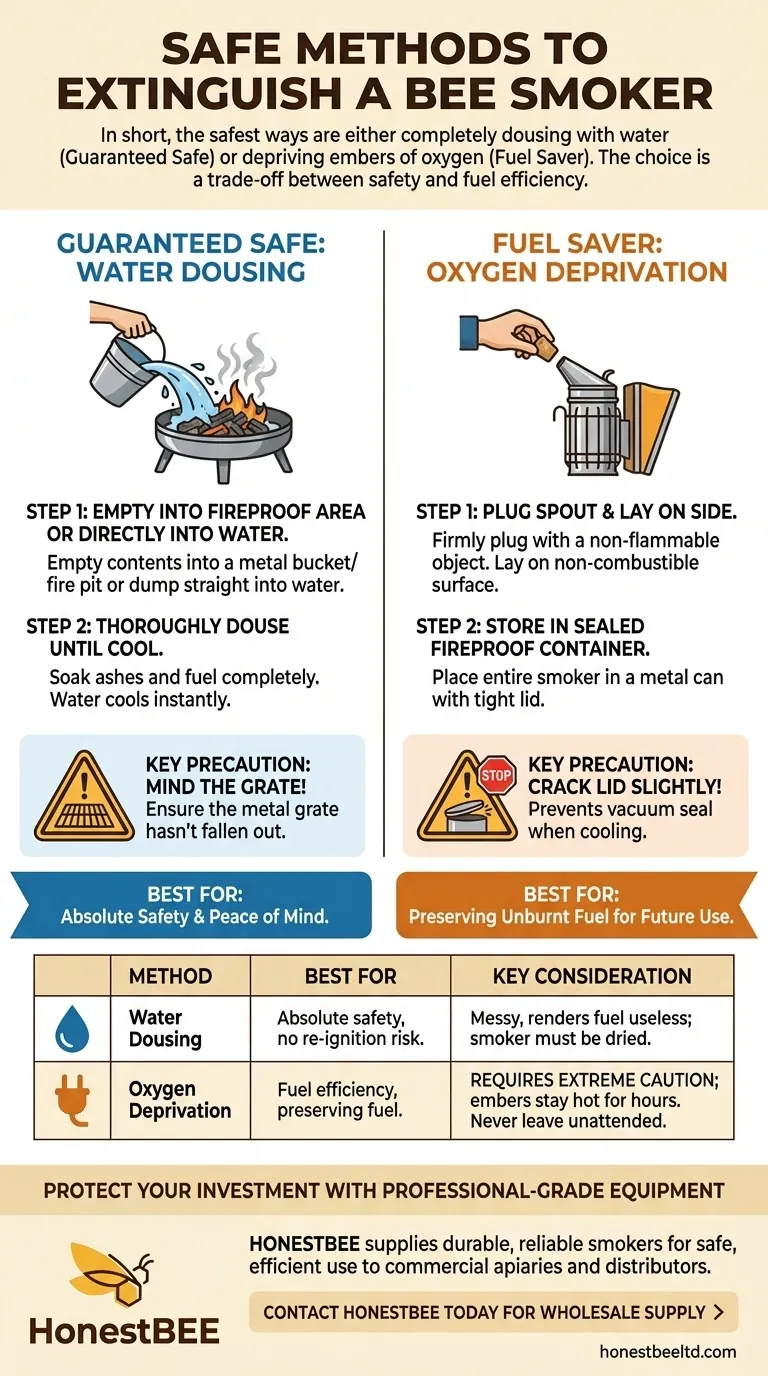
Related Products
- Premium Traditional Copper Bee Smoker with Bellows
- Economy Galvanized Beekeeping Honey Bee Smoker for Wholesale
- Professional Bee Smoker with Elongated Spout and Durable Bellows for Beekeeping
- Heavy-Duty Bee Smoker with Durable Plastic Bellows for Beekeeping
- European Stainless Steel Bee Smoker for Honey Bee Hive
People Also Ask
- What are some alternatives to using smoke in beekeeping? A Guide to Gentle Hive Management
- What happens to bees when they sense smoke? Unlock the Secret to Calm Hive Inspections
- How did early beekeepers use bee smokers? Master Ancient Bee Calming Techniques
- How does water mist work as an alternative to smoke in beehives? A Guide to Safe & Effective Use
- What is the purpose of a bee smoker and how should it be used? A Guide to Calm, Safe Hive Inspections



